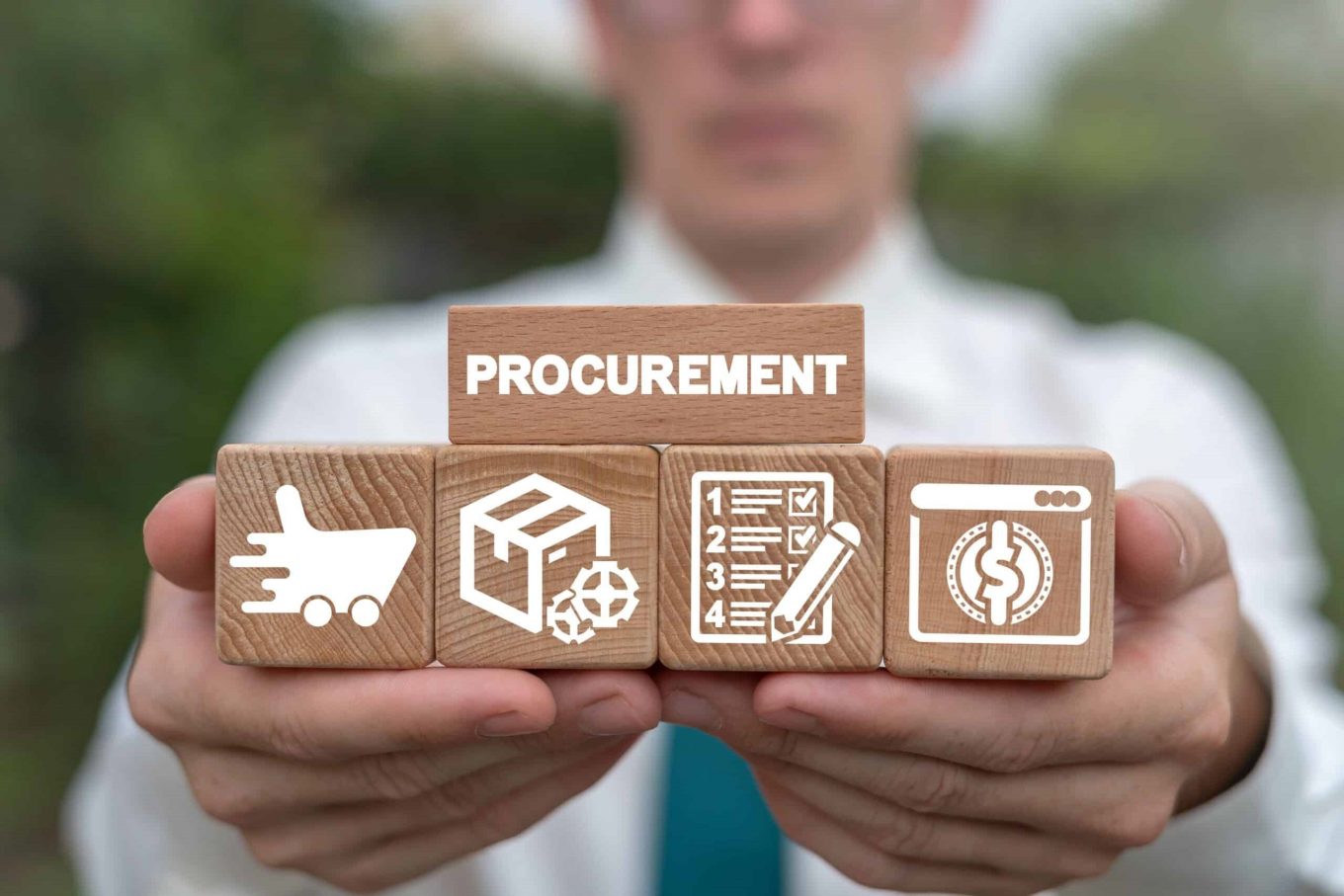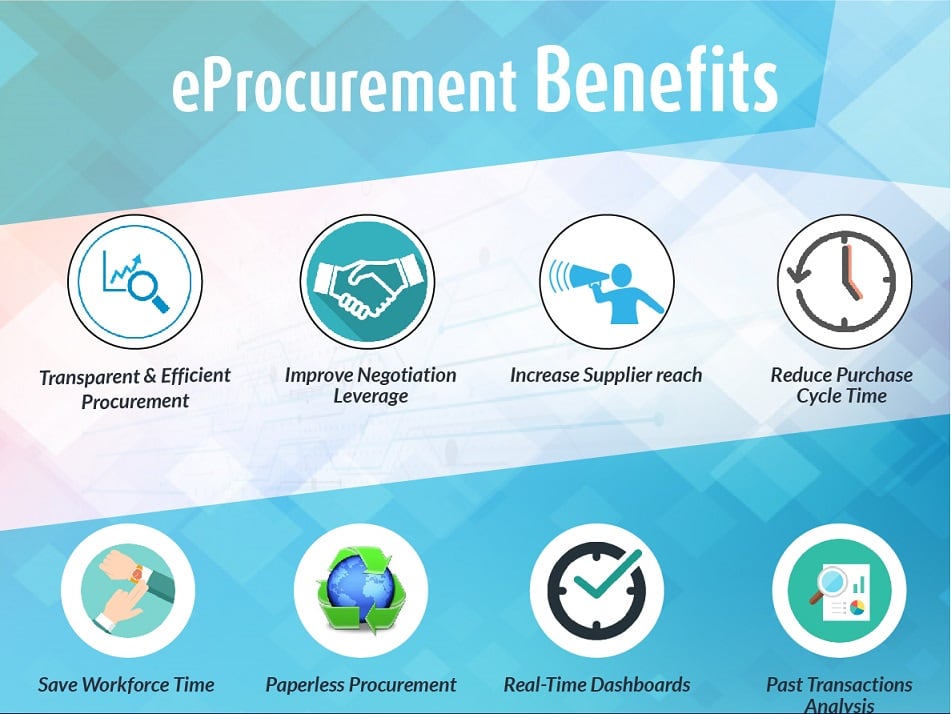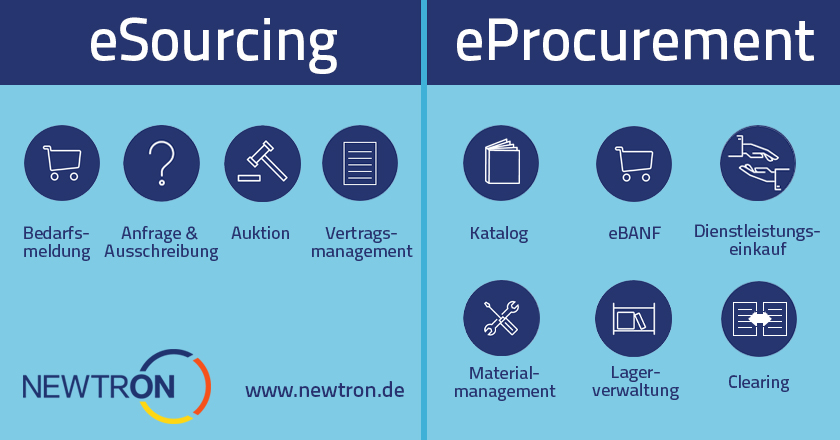For a logistics business to function smoothly and achieve its objectives, sourcing, and procurement must work in tandem.
This implies that while the sourcing department usually discusses contracts with suppliers and negotiates prices and minimum order capacities, the procurement department must use all this information to plan budgets according to supply requirements. Similarly, the record of supplier performance and risk merits provided by the procurement department allows the sourcing department to assess which suppliers and contracts to renew.
Hence, if both departments don’t have real-time access to each other’s information, neither will function efficiently. Without effective coordination between sourcing and procurement, it is absolutely impossible for any business to work well.
For this reason, the terms e-sourcing and e-procurement are commonly used interchangeably; however, the two aren’t exclusively the same. In today’s article, we’ll discuss in detail what these two actually mean, and what makes them different from one another.
What is E-Sourcing?
E-sourcing centers on locating viable suppliers for the required sourcing needs and facilitates different business units to work together on various sourcing undertakings. It includes electronic processes that handle the documentation and approval of procurement requirements for different products/goods and services. Generally, the strength of the organization determines which e-sourcing software will help achieve outcomes.
The main functions of e-sourcing include:
- requesting bids and quotes from different suppliers
- objectively choosing a suitable supplier
- negotiating and granting contracts according to a predetermined selection criterion
- ensuring the selected supplier delivers and meets the needs at the most reasonable price and value
With e-sourcing, almost all the sourcing processes are handled online, generally via a specific, consolidated hub. E-sourcing facilitates the identification of goods and suppliers, as well as an online system that allows communication between the suppliers. Moreover, e-sourcing makes efficient consolidation of proposals possible and simplifies comparison-making processes.
Strategic e-sourcing is also vital in an organization because each department has its exclusive customary sourcing requirements. Organizations that employ e-sourcing software help end-users source suppliers within the limits of the necessary procurement and compliance regulations.
Moreover, supply distortions and shortages during the pandemic have highlighted the importance of identifying and modifying supply chain risks, along with developing vigorous e-sourcing policies for withstanding any future catastrophes.
How Does E-Sourcing Work?
Here is a detailed insight into the steps involved in e-sourcing:
Pre-purchase Questionnaire(PPQ) – prior to doing business with a prospective supplier, organizations must verify whether they are reliable and efficient. This is done via pre-purchase questionnaires; detailed documents developed to evaluate the appropriateness of a supplier. With e-sourcing, this process has further been streamlined, since suppliers simply upload their responses into e-sourcing software and distribute them directly to businesses.
Invitation to tender (ITT)– this is a call for tenders and so that companies can acquire competing offers from prospective suppliers selected from the PPQ.
Request for Quotation(RFQ) – this process focuses on price for selecting a supplier. Companies send forms to all prospective suppliers requesting tentative prices for their services.
Evaluation – once the above processes are complete the final evaluation begins where information from all prospective suppliers is carefully considered. E-sourcing makes this process more sophisticated via analytics, automatic scoring tools, and dashboards that allow buyers to automate evaluation processes and also save valuable time.
E-Auction – then is the e-auction, where all selected suppliers are invited to bid against one another to acquire the right to obtain the contract. Many e-sourcing tools provide different e-auction types with distinct benefits.
Contract Award – once tendering and e-auction is done, a contract is granted to the selected supplier.
Why Has E-Sourcing Become So Popular Among Global Companies?
There are various reasons for the increasing popularity of e-sourcing, particularly among global logistic companies.
First, it helps simplify and streamline the whole process of sourcing. Without e-sourcing, organizing and keeping track of various suppliers situated in different countries across many continents can be extremely challenging. Thus, a sole hub for compiling all this information can make things much easier for companies to organize their proposals and supplier information.
Second, e-sourcing can function as a conveniently accessible one-stop-shop repository for an organization’s sourcing information, including details and particulars of all suppliers. This not only serves as a significant time-saver but also boosts competition by pitting many suppliers against each other in attempts of gaining an organization’s attention and interest. Ultimately, this helps maximize supplier competition while reducing prices.
Other benefits of e-sourcing include:
- allows access to a larger variety of suppliers and leveraging numerous e-auction strategies
- allows buyers to review all essential supplier information simultaneously via online portals
- reduces time procurement specialists need to complete the tendering process
- boosts time and efficiency with which a contract is awarded
- enhances transparency between suppliers and buyers
- simplifies auditing and boost compliance, since all procurement-related documents can be stored on a single portal, transparently displaying why and how a supplier was chosen
What is E-Procurement?
E-Procurement begins by actually executing contracts. It consists of all the electronic processes involved in managing procurement transactions and compliance, such as ordering, requisition, authorization, receipt, and payment, and carefully monitoring suppliers. All payments are managed and processed electronically with no negotiations during this period of the purchasing cycle.
Simply put, e-procurement involves the actual purchasing of goods and services from contractors. It implements the terms of the contracts negotiated during the sourcing process, which as mentioned include pricing, possible rebates, and other specifications.
How Does E-Procurement Work?
E-procurement streamlines the conventional procurement process. Rather than manually exchanging contracts, giving out tenders, and completing supplier procurement questionnaires, e-procurement automates the whole process. Moreover, it merges components of procurement and finance and simplifies processes between the two.
Key constituents of e-procurement include:
Supplier Management (Supplier Relationship Management (SRM) and Supplier Information Management (SIM) – this denotes a buying organization managing a supplier information database that includes information on relations, performance, and interactions.
Sourcing and Contract Management– this highlights the entire process an organization commences when ascertaining and sourcing products/services and handles strategic sourcing accomplishments and manages contracts. It usually consists of e-sourcing (e-auctions and e-tenders) and contract management.
Procurement – this consists of the entire process starting from ordering products/services from a supplier to making payments for the services utilized. E-procurement software enhances efficiency, savings, and transparency of the entire purchasing process.
Analytics– these allow procurement and finance specialists to overview, fix any problems, and make informed decisions across the entire business with the help of easily modifiable dashboards.
Key Benefits of E-Procurement
E-procurement holds many key benefits for organizations, such as:
- automating lengthy tasks such as auctioning, document management, evaluating and finalizing suppliers, negotiating prices, agreeing and storing supplier contracts, etc.
- enhancing the speed of business and frees staff for other tasks
- improving workflow
- enabling end-user self-service and decentralization with control via company-certified catalogs
- promoting hassle-free processing of employee requisitions and supplier payments
- providing organizations visibility into what they spend which helps control non-compliant spending, consolidation of suppliers, and negotiation of cost savings
- allowing real-time information to be shared between finance systems and supply chains for enhanced visibility of information and transactions
E-Sourcing vs. E-Procurement: The Main Differences
As is obvious from the explanations above, e-procurement and e-sourcing are two intertwined aspects. E-sourcing is applied strategically to make sure the best possible pricing and values are decided upon in the contract, whereas e-procurement is strictly tactical and ensures the flow of goods and services is optimal and based entirely on the terms and conditions of the contract.
However, to run a smooth logistics business and assign duties and resources efficiently, it is also important to understand the critical differences between the two.
Core Concept
E-sourcing involves the creation of supply channels which the procurement team utilizes for hiring appropriate suppliers for an organization. It warrants the supplier base and supplier chain.
E-procurement consists of procuring goods, materials, services, and inputs catering to the organization’s needs for carrying out various operations. It ensures that all these processes flow smoothly and efficiently.
Phases Involved
E-sourcing consists of the following stages:
- efforts to develop and maintain long-term relationships with vendors
- critically inspecting suppliers
- developing and sustaining a supplier base catering to all essential organizational needs
On the other hand, e-procurement consists of the following stages:
- e-tendering
- e-auctioning
- catalog management
- PO integration
- e-invoicing
- e-payment
- contract management
Main Focus
E-sourcing focuses mainly on suppliers involved in the manufacture of products for supplies. Instead, e-procurement mainly focuses on the kind of product supplied.
Processes Influenced
E-sourcing is involved in the following key processes:
- bids for quotes for products/goods
- agreements and negotiations regarding pricing
- obtaining vendor statistics and uploading them to a VMS (vendor management system)
- establishing a lead time to determine order quantities, quality information, standard packing quantity, etc.
On the contrary, e-procurement influences the following key processes:
- mechanized order processing
- tracking inventory items, services, stocks, and expiration deadlines
- intelligent and smooth workflows that minimize operating costs and ensure tactful purchasing
Benefits of Adopting Sourcing and Procurement Software
Inclusive procurement software integrates the functions of both sourcing and procurement and makes both processes easier and hassle-free.
Comprehensive procurement software generally offers:
- A single source of truth (SSOT) for sourcing and procurement
- Digital processes and systems that significantly reduce human error
- Easier and efficient ways to forward retailers to procurement, and source them back to sourcing for evaluations, etc.
- Reduction in cycle times, since decision-making processes are streamlined and completed quicker
- Enhanced reflectivity into company data
Final Thoughts
Despite having some major differences, sourcing and procurement are integrated processes that require one other to succeed. E-sourcing facilitates procurement by building a reliable supplier base that aids the procurement process – it is a strategic enabler to e-procurement. And e-procurement uses the foundations created by e-sourcing to order goods, track deliveries, and analyze metrics – its nature is transactional.
Organizations are currently dealing with the complexity of sourcing suppliers and the difficulty in procuring materials in a highly competitive supply chain market. In order to streamline these strategic processes, adopting e-sourcing and e-procurement tactics can help simplify complexities and enhance efficiency.
CATEGORY
1 on 1 Dedicated Managers
for Personalized Solutions as your very own dedicated in-house team
CUSTOMER CENTRIC
success for our customers at the heart of every action
Transparent & Trusted
clear cut processes trusted by 2000+ global sellers & brands

Amazon Seller Solutions Providers
servicing Amazon’s Global Sellers across Global Marketplaces






